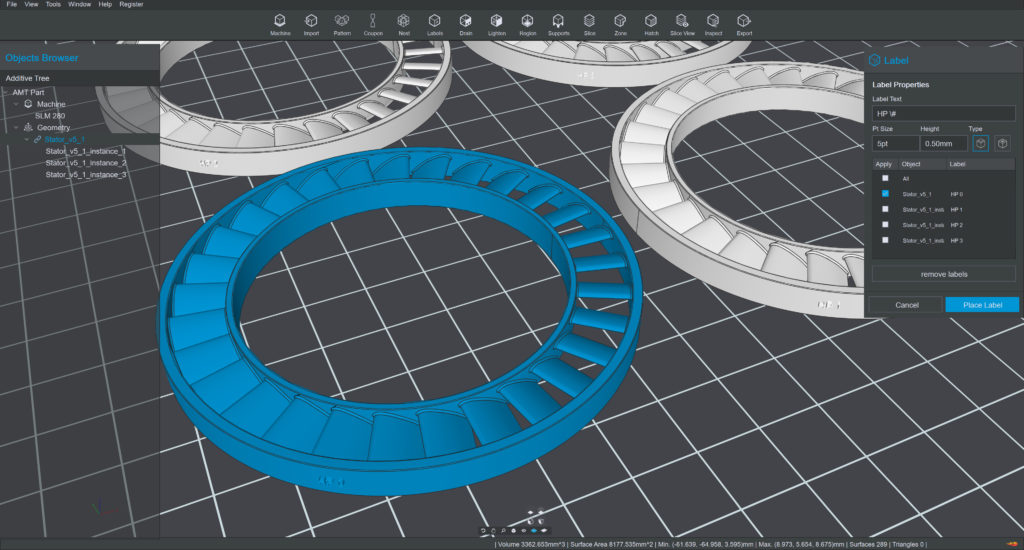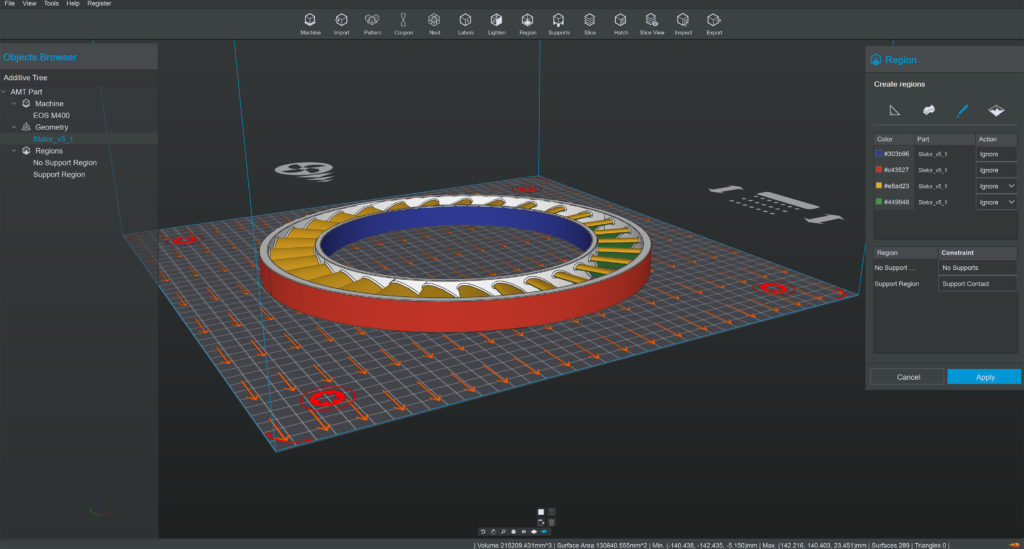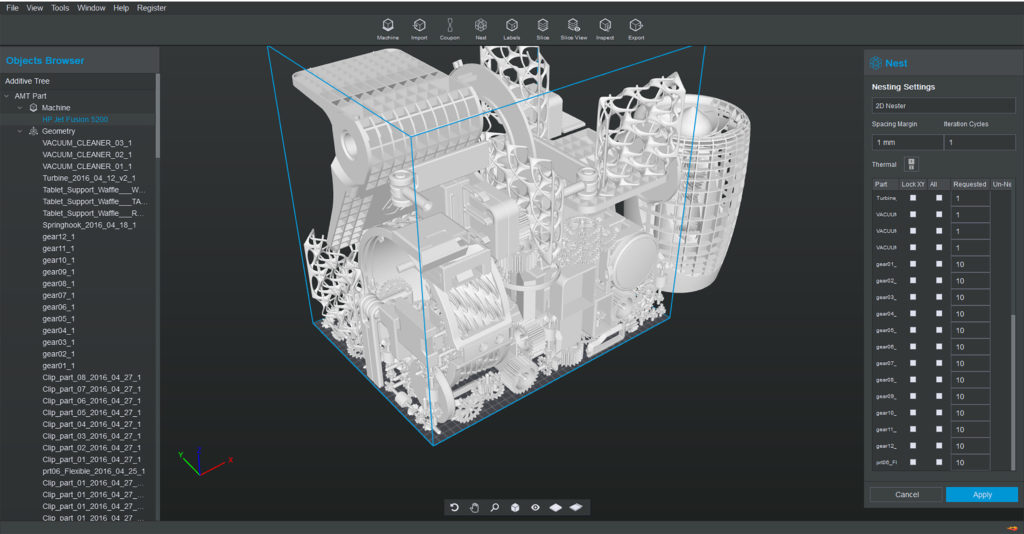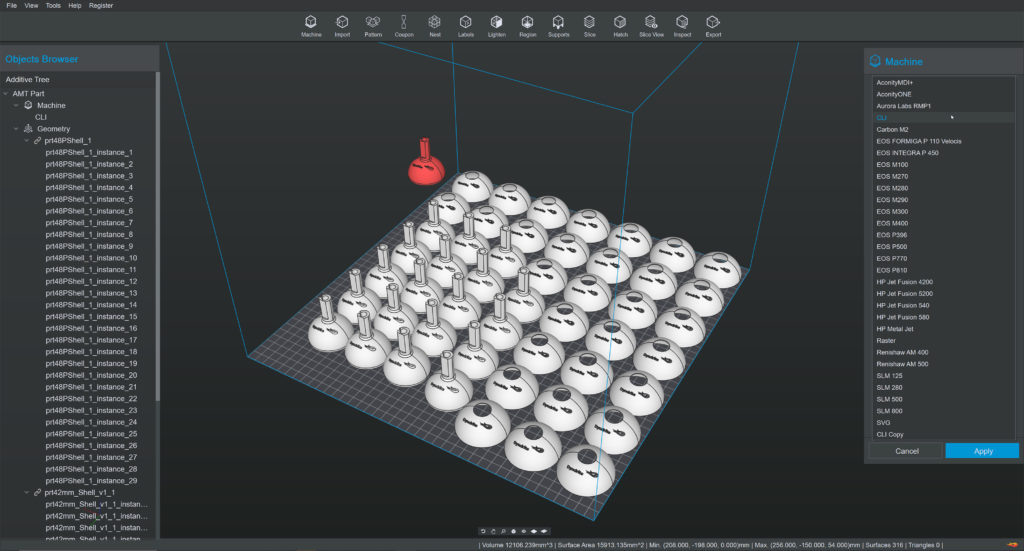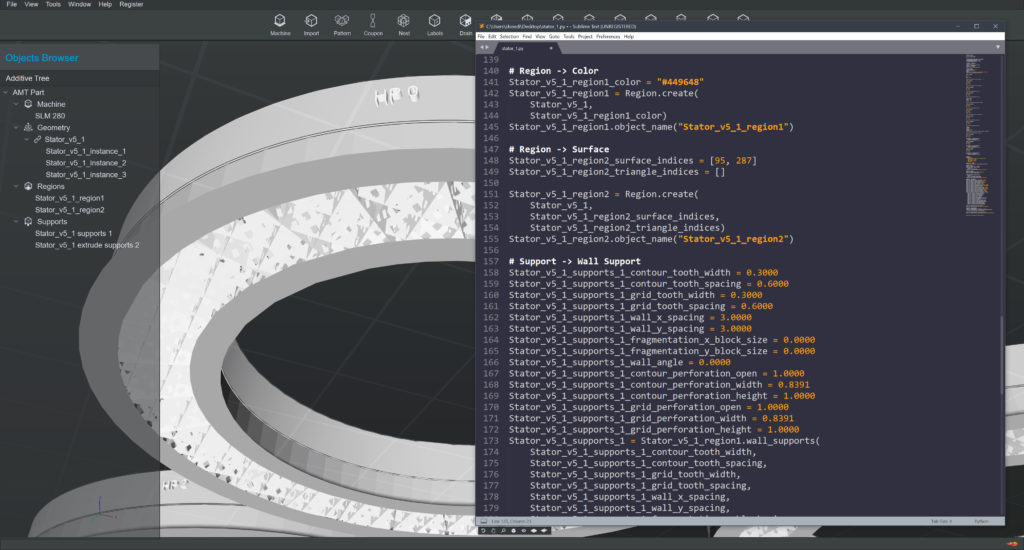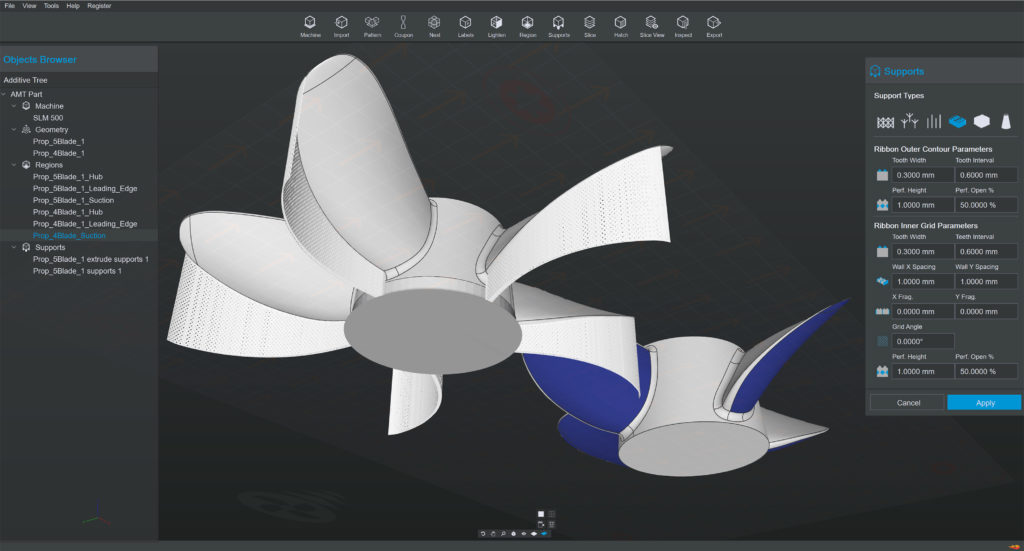This summer, Seattle-based additive manufacturing hardware and software solutions provider Dyndrite and HP decided to join forces to license Dyndrite’s geometric kernel technology in order to power next-generation cloud and edge-based digital manufacturing solutions. The goal was for HP, the founding member of the Dyndrite Developer Council, to create a software platform that could power AM factories of the future. This week, the two companies announced the first commercial application built on Dyndrite’s core Accelerated Geometry Engine: HP’s Universal Build Manager Powered by Dyndrite, an advanced AM software solution.
“Additive manufacturing has always had incredible potential to disrupt the global manufacturing market, but has been limited by the focus on adapting traditional manufacturing software to address the problems that are unique to additive manufacturing. We are working with Dyndrite to provide the necessary tools and infrastructure to enable additive at scale,” said Ryan Palmer, Global Head of Software, Data and Automation, HP Personalization & Industrial Business. “HP Universal Build Manager Powered by Dyndrite will deliver a new foundation for the industry through collaboration with other industry OEMs and ISVs.”
As a solution for delivering CAD-to-print workflows for additive, the new Universal Build Manager Powered by Dyndrite will work to bring automation, improved performance, and scalability to the AM industry. It includes strong build preparation tools, such as support generation, slicing, patterning, nesting, labeling, and CAD import. According to a Dyndrite press release, it’s an OEM- and process-agnostic tool, as well as the first GPU-accelerated AM Build Prep and Management solution in the industry. Dyndrite’s plug-in architecture helps to protect important IP, and HP’s Universal Build Manager Powered by Dyndrite offers a process- or machine-specific plugin infrastructure, so 3rd party software and hardware developers don’t miss out.
“Going forward, this moment will be recognized as the point where the additive manufacturing market broke away from the status quo of legacy technologies and file formats. Even before we founded Dyndrite we knew we needed to work with industry leaders like HP centered on pushing digital manufacturing forward,” Dryndrite’s CEO and Founder Harshil Goel said. “We are excited that HP shares our vision for software disruption and look forward to collaborating to push the boundaries of our innovation.”
This solution supports several different production-grade AM technologies: Binder Jetting, Selective Laser Melting (SLM), Powder Bed Fusion/DMLS, Selective Heat Sintering (SHS), Electron Beam Melting (EBM), Selective Laser Sintering (SLS), Fused deposition Modeling (FDM), Stereolithography (SLA), Digital Light Projection (DLP), Laminated Object manufacturing (LOM), Composite-Based Additive Manufacturing (CBAM), and, of course, HP’s Multi Jet Fusion. Because it’s powered by Dyndrite, the software leverages its Engine for integrated Python scripting APIs for automation and workflow integration, and also uses NVIDIA Enterprise GPUs for computation acceleration. This will, according to HP, allow for personalization and end-to-end control.
“Automation, software, and data are key to delivering mass customization of parts and unlocking the full potential of large-scale additive manufacturing. We are committed to relentlessly improving our capabilities and helping customers optimize and automate workflows, enable compelling new applications, and produce sustainable, high quality parts at scale,” said Ramon Pastor, GM and Global Head of 3D Printing and Digital Manufacturing, HP Inc.
To learn more, check out Dyndrite’s case study, or log on to its Dyndrite Day event at 11 am EST, October 29th, for a sneak peek at the new HP Universal Build Manager Powered By Dyndrite.
HP has even more news to share—together with its long-time partner, chemical company Evonik, it has developed a new co-branded elastomer, which has been optimized for HP’s Multi Jet Fusion (MJF) technology and will be sold exclusively through HP. This new specialty powder is a flexible, high-performance 3D printing material based on a thermoplastic amide grade (TPA), and will be presented virtually at formnext connect, November 10-12th.
“Open collaboration with materials leaders like Evonik continues to be so important as we push the boundaries of additive manufacturing and accelerate the industry. We are excited to continue building on our long-standing partnership with Evonik to deliver another compelling material for customers and expect to see innovative new applications that take advantage of TPA’s flexible, lightweight properties,” said Tim Weber, global head of materials, HP 3D Printing and Digital Manufacturing.
The newly released thermoplastic elastomer is a lightweight-construction material with a Shore A hardness of 91 and a very low density of 1.01 g/cm³. According to Evonik, TPA has high fatigue resistance and durability, and is well-suited for prototypes, and even functional end-use products, that require high energy return and extensibility, like automobile components, sporting equipment, end-of-arm tooling, and ducting and bellows. Additionally, it’s a perfect match for efficiently creating high-quality parts on HP’s Jet Fusion 4200 3D printers.

Evonik’s TPA ready-to-use material is excellently suited for production of functional high-tech 3D plastic parts—prototypes as well as series products—that call for high extensibility and energy return, such as sports equipment or automobile components.
“The development of new ready-to-use specialty materials tailored to customer requirements belongs to Evonik’s DNA: The company is a leading producer of innovative high-performance powders, filaments, and liquid resins for all important 3D-printing technologies. The new TPA is a perfect example of successful collaboration between Evonik and HP—that is, between the materials and the technology aspects of 3D printing—to develop the perfect printing parameters in close conjunction, so as to finally allow a smooth and trouble-free printing process,” stated Sylvia Monsheimer, Head of the New 3D Printing Technologies market segment at Evonik.
Several Evonik customers, such as GoProto, a rapid manufacturing company that specializes in quick-turn, on-demand, custom manufacturing, have already put Evonik and HP’s new TPA to the test.
“We researched this elastomer from Evonik and instantly recognized the massive market potential and its ability to help us provide customers with production-grade parts with no tooling and all of the benefits of 3D printing. We’re not going after parts we can already produce with conventional methods inexpensively; we are going for the things that haven’t been addressed well before,” said GoProto’s President and CEO Jesse Lea.
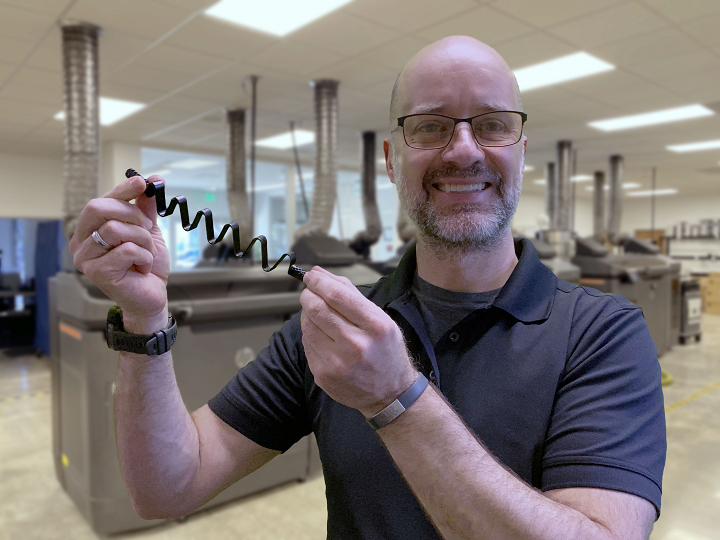
“The combination of production quality material properties like high wear resistance, energy return, longevity and light weight continues to impress at every application,” says Jesse Lea, President & CEO at GoProto. (Image: GoProto)
Enabled by the new elastomeric TPA, GoProto has just introduced 3DElastoPrint, a 3D printing parts service that makes rubber-like parts for customers that traditional manufacturing methods would not be able to achieve.
“We at GoProto are extremely excited about the incredible value this brings to our clients developing new products in a fast-paced and ever-changing environment,” Lea said.
(Images courtesy of HP unless otherwise noted)
Subscribe to Our Email Newsletter
Stay up-to-date on all the latest news from the 3D printing industry and receive information and offers from third party vendors.
You May Also Like
Open Source Everything: Assist in Everything with 3D Printing
In a previous post in this series, we looked at the opportunities related to open source assistive devices, often small and novel objects that can be 3D printed cheaply. Unique...
Open Source Everything: 3D Print Your Own Assistive Device
Professors Joshua Pearce and Jacob Reeves worked with student Anita So to make an open source walker. It’s a customizable device, whereby the joints are 3D printed on desktop machines...
Open Source 3D Printing: Set up Your Open Hardware Development So Everyone Can Participate
Josef Průša, the founder and CEO of Prusa Research, published an important and thought provoking article titled “The state of open-source in 3D printing in 2023” where he called for...
The State of Open-source 3D Printing: How to Preemptively Quash Patent Parasites and Trolls
Josef Průša, the founder and CEO of Prusa Research, published an important and thought provoking article titled “The state of open-source in 3D printing in 2023” where he called for...


